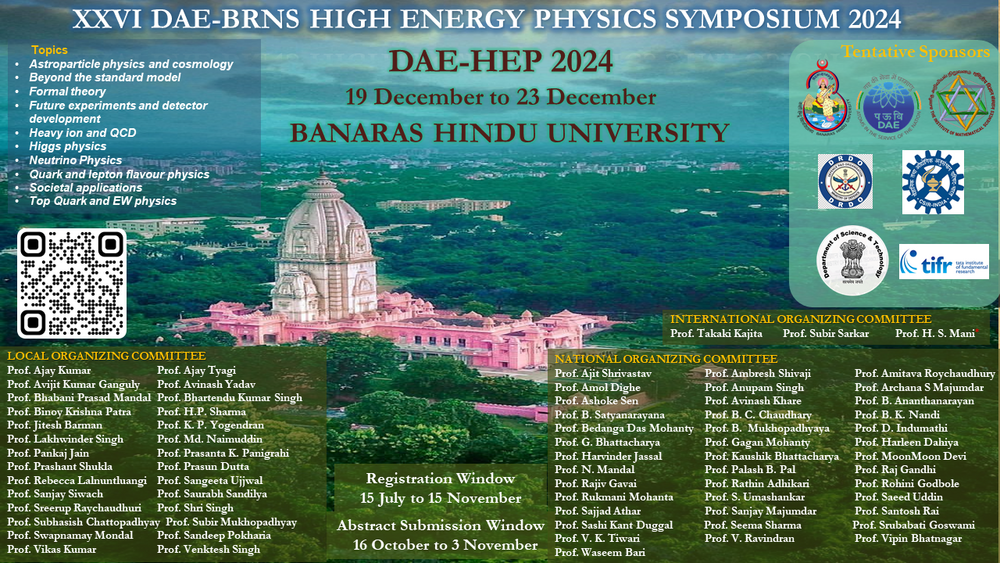Speaker
Description
The physics regarding the existence and exact position of the critical end point (CEP) on the quantum chromodynamics (QCD) phase boundary is ambiguous and remains an open question. In this work, we have used a hadron resonance gas (HRG) model that incorporates finite-sized baryons, antibaryons, and mesons. This hard-core radius (\textit{r}) plays a crucial role in the existence of the CEP. We have used a thermodynamically inconsistent model for the hadron gas (HG) and the Bag model equation of state (EoS) for the QCD plasma, both constructed through Gibbs’ equilibrium conditions to achieve the deconfinement transition. A demarcation line exists, differentiating the HRG and QGP phases over the entire $T-\mu_B$ plane when treating hadrons as point-like particles. We found the appearance of a first-order phase transition when a hard-core size is assigned to each hadron in the HRG phase, leading to a phase boundary that ends at the CEP, beyond which a smooth supercritical crossover region appears. This indicates that the presence of a putative CEP in the $T-\mu_B$ plane of the QCD phase diagram implies the emergence of a Widom line in the supercritical region, providing a continuous extension of critical behavior beyond the CEP. The mean-field approach also supports this work, as the CEP does not emerge on the QCD boundary without incorporating excluded-volume effects. This study offers an insightful explanation for the origin of the CEP and the crossover transition on the QCD phase boundary.
| Field of contribution | Phenomenology |
|---|

